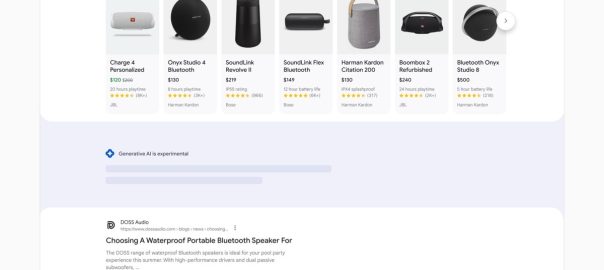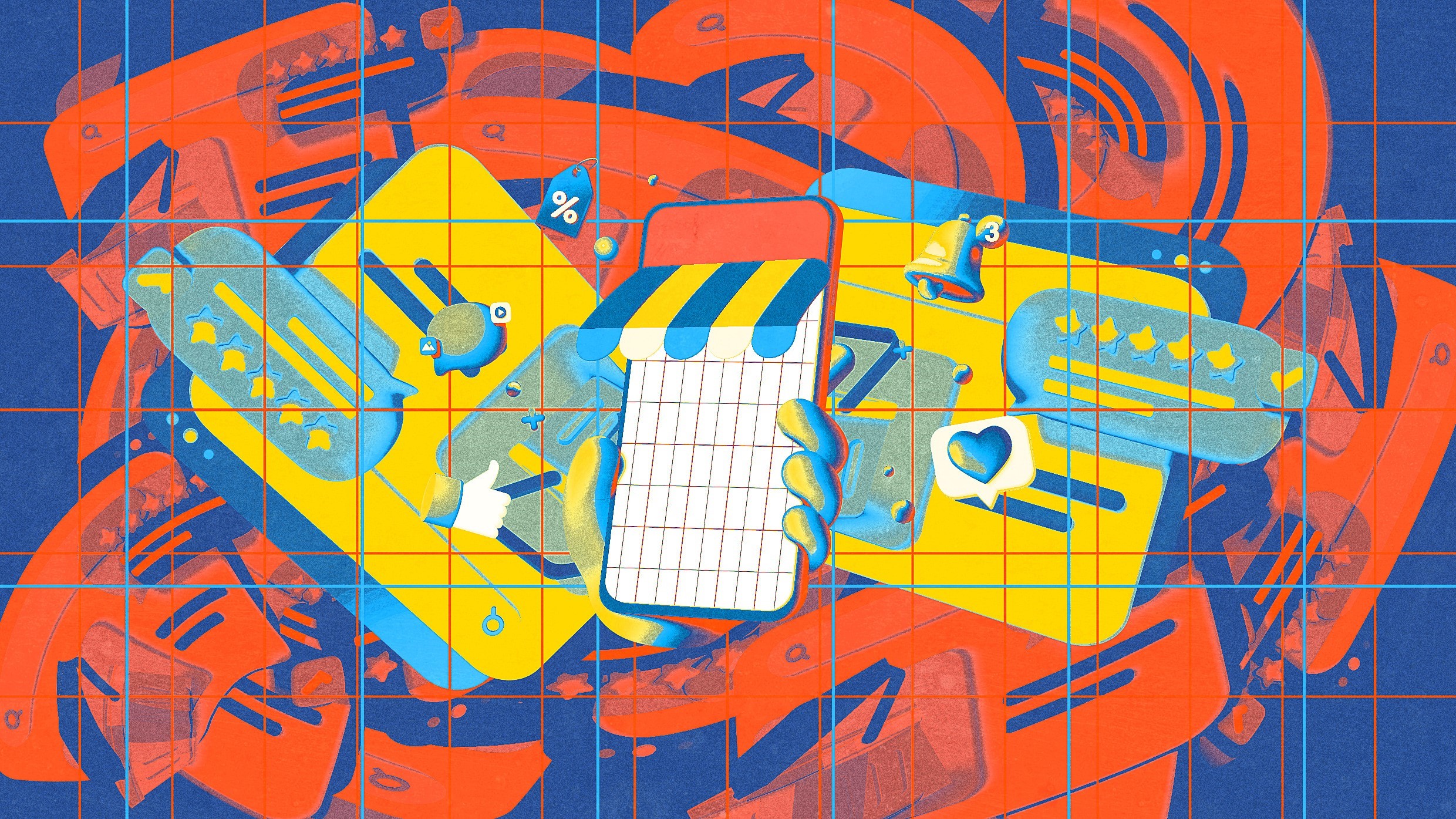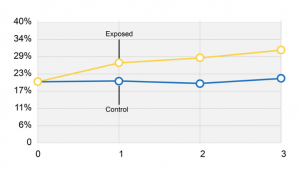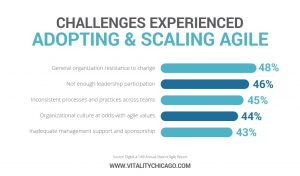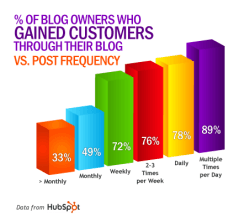On a recent Saturday, I set out to find my two daughters flower girl dresses for an upcoming wedding. I typed “flower girl dress” into Google, a rabbit hole opened, and I tumbled in, only to emerge three hours later with a dozen tabs and thousands of options to choose from.
If this sounds familiar, welcome to online shopping in 2023. It is dull, draining work. Whether you’re buying groceries or sneakers, it entails sorting through endless pages of inventory.
Three decades into e-commerce, consumers have resigned themselves to the idea that shopping means taking on the cognitive load of processing hundreds of data points. And while retailers have made marginal improvements—like better targeted ads and product suggestions—they haven’t successfully replicated the kind of curation and discovery you might experience at a delightful brick-and-mortar store. “It’s the tyranny of the grid,” says Maria Renz, Google’s VP of commerce, who previously spent more than 15 years at Amazon.
But Renz—and other e-commerce experts—believe that change is around the corner. Behind the scenes, many companies are already experimenting with artificial intelligence and machine learning to improve the shopping experience. The dawn of generative AI is only going to accelerate the transformation. And over the last few years, brands like Stitch Fix and Hungryroot have taken radical new approaches to e-commerce, offering a glimpse into how the shopping experience could be better in the near future. The question, however, is whether consumers and retailers are ready for such a big transformation.
How Online Shopping Changed Our Lives
When e-commerce stores first appeared in the mid-1990s, it felt like a revolution. The very first retailers—Amazon, eBay, Zappos—offered a basic user experience, featuring a simple search engine and hyperlinks to products. But they opened up a vast world of products people never had access to before. Overnight, an avid reader in Iowa could access collections of rare books, and a fashionista in Nebraska could order the latest Manolo Blahniks.

Amazon began with a million book titles and grew exponentially from there. Legacy retailers like Safeway and Nordstrom were uploading their inventory. Over time, brands would find ways to sell almost everything online, and ship them to our doorsteps in days. By the 2010s, a new generation of hip startups like Warby Parker, Everlane, and Away launched, selling their products entirely through their own websites, which allowed them to build more intimate relationships with customers.
Online retailers have made incremental improvements to the shopping process. Startups hired designers to create sleeker, more streamlined websites that were easier to navigate. Retailers began offering subscription programs to make it easier to reorder products. Brands got better at marketing products based on what customers similar to you have purchased.
But there are other reasons that brands and retailers haven’t been more motivated to innovate, says Olivier Toubia, a marketing professor at Columbia Business School. The companies that build e-commerce platforms are not always motivated to streamline the shopping experience for consumers. For instance, drastically paring down the number of search results that show up could offer a more curated experience, but it could also diminish sales. The same goes for suggesting similar products at a lower price point. “Retailers have been motivated to improve the shopping experience, as long as it also improved the bottom line,” he says. “Can you blame a business for trying to make money?”
Exciting Experiments
Still, over the years, e-commerce entrepreneurs have tried to experiment with new ways of interacting with consumers. Some of the most interesting approaches use AI to create a highly customized shopping experience for each customer.
Take, for example, Stitch Fix, which in 2021 launched a new platform called Freestyle that creates customized online boutiques for each consumer. Shoppers would fill out a brief survey about their style, size, and budget preferences, then receive a feed of outfits tailored to them. On the backend, Stitch Fix used data about its 4.1 million customers to train AI to match each new shopper to customers with similar aesthetics. This allowed the website to suggest pieces that would likely be a good fit.
The result was a radically different shopping experience, more akin to a social media feed. You would see a series of fully styled outfits and when you clicked on something that caught your eye, the AI would get smarter. While you can shop in a more focused way by specifying the category you are most interested in buying, such as outerwear or jeans, the entire experience was much more about curation and discovery. In other words, the burden is not on you to search for what you want; you can passively scan through options you’re likely to appreciate.
Jeff Cooper, Stitch Fix’s director of data science, says it took years of data from billions of transactions with customers to be able to create a personalized experience that really works. But the platform also incorporated softer data, about stylists’ suggestions about what pieces went well together, to ensure suggestions were also guided by human intuition. “We obviously fed the algorithm client data, the way many other retailers do,” he says. “But I think the secret sauce is having expertise from stylists, trend experts, and merchandizing experts. I think this fine-tuned artificial intelligence approach is the next big wave of e-commerce.”
In the world of food, a grocery startup called Hungryroot has taken a similar approach of using AI to help the customer shop. Customers fill out a profile, specifying their dietary restrictions, favorite recipes, and flavors, along with the number of meals they would like to prepare for that week. Then, their grocery cart will automatically fill with the ingredients necessary to cook several chef-crafted recipes. “Grocery sites start with an empty cart, which is daunting and time-consuming to fill,” says Ben McKean, Hungryroot’s founder and CEO.
Customers can proceed to tweak what is in their cart. They might remove a yogurt flavor they don’t like or switch out one recipe for another, all of which helps the AI make better decisions for you next time. However, 70% of groceries purchased are chosen by algorithms, not customers. And while the average shopper spends hours a week grocery shopping, he says that the Hungryroot customer only spends a few minutes. “There’s an enormous cognitive load required to figure out all the groceries you will need for your family for that week,” he says. “But AI is very good at optimizing these decisions.”
So far, Hungryroot’s team has used machine learning technology to help finesse its algorithm. Over the past four years, it has generated seven million orders totaling 100 million grocery items. But as Generative AI technology has improved—including platforms like OpenAI’s ChatGPT and Google’s Bard—McKean is thinking about how to incorporate it into the shopping experience. He argues that generative AI wouldn’t be very good at optimizing a customers’ grocery shopping experience, at least at this point. But it might have other uses. “If we try to use generative AI to fill a grocery basket, it ends up making up recipes and foods,” he says. “But it is very good at explaining to people in natural language why the algorithm chose what it did. So we might plug it in as a kind of shopping companion.”
The AI Revolution to Come
Hungryroot isn’t alone in imagining that AI could become a highly skilled e-commerce shopping partner in the near future. The Salesforce study found that 92% of the 1,125 retailer leaders it surveyed are investing in generative AI. Renz from Google imagines a future where generative AI can help guide us through tricky buying decisions.
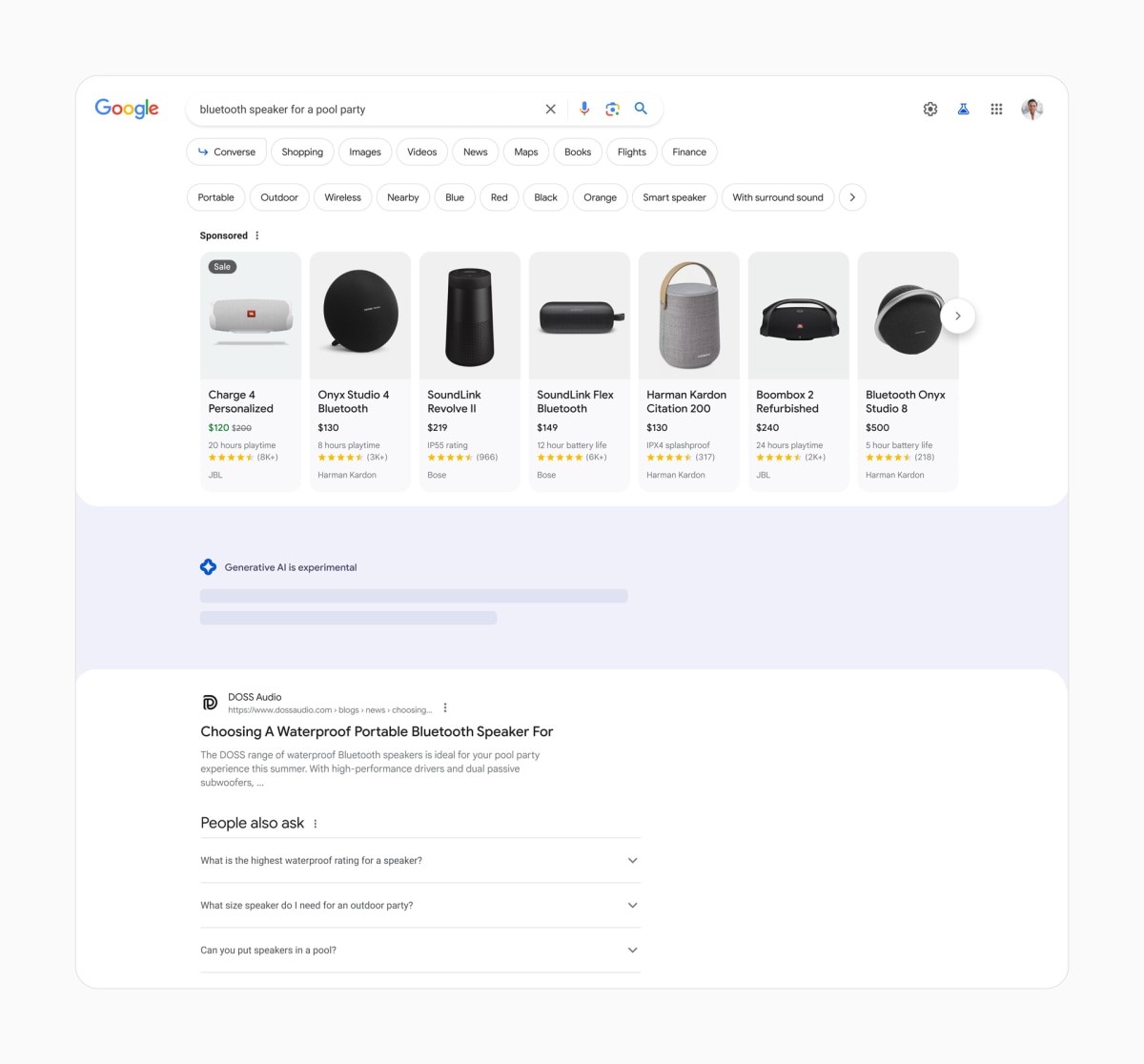
Renz says that Google currently has the largest AI-powered dataset for shopping in the world, with 35 billion listings that include products that are both online and offline, in brick and mortar stores. (This is how you can search for a specific mascara on Google and discover that it is in stock at a store near you.) While Google has already introduced generative AI through its virtual try-on service, and over time the company plans to incorporate it even more into the shopping experience. Renz says Google could eventually become a knowledgeable shopping companion. This is particularly true for big ticket or complicated purchases, like a luxury bag or an electric bicycle.
“Generative AI can be very impactful when you don’t know much about a category or the factors you should consider before purchasing,” she says. ”Ordinarily, you would be researching for weeks, with multiple tabs open on your browser, and you’re learning about the mechanics of bikes. But AI can distill a lot of information and compare two products side-by-side.”
Frommer, from the New Consumer, believes that this kind of AI shopping companion could become even more powerful if it was personalized to you. “Imagine if Google developed an overarching shopping personality for you,” he says. “If it knew your size and budget, the kind of clothes you like to wear, your favorite meals. Instead of searching for a particular budget, you could tell the chatbot, ‘Find me a new trench coat for the fall’ or ‘Order me ingredients for my lasagna recipe.’”
But Renz argues that AI isn’t going to be a magic bullet that will transform online shopping. Instead, companies will incorporate a range of technologies to make the whole experience more fun and efficient. For instance, Google has recently launched a new virtual try-on technology that allows consumers to see garments on models whose bodies are very similar to their own own. Lens, Google’s image recognition technology, allows you to take photos of people in the real world or screenshots on Instagram, and immediately figure out where to buy products in the pictures.
She says that companies are only just beginning to incorporate these technologies into shopping, but change is coming fast. “There’s an opportunity to take e-commerce to the next level, and really delight users,” she says. “We believe that the future of shopping will be faster and easier, but it will also be more comprehensive. It will be more like the way we shop in real life.”
(5)
